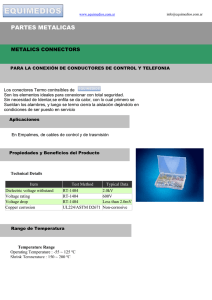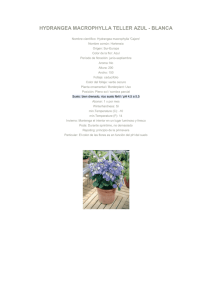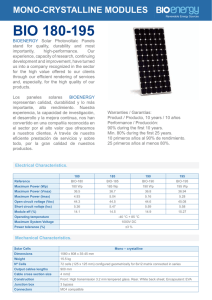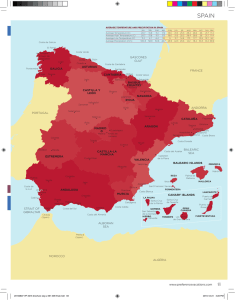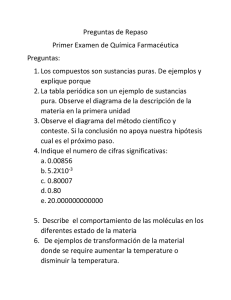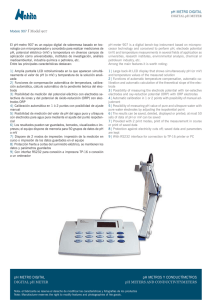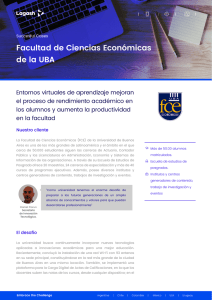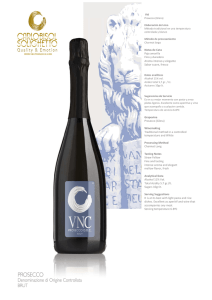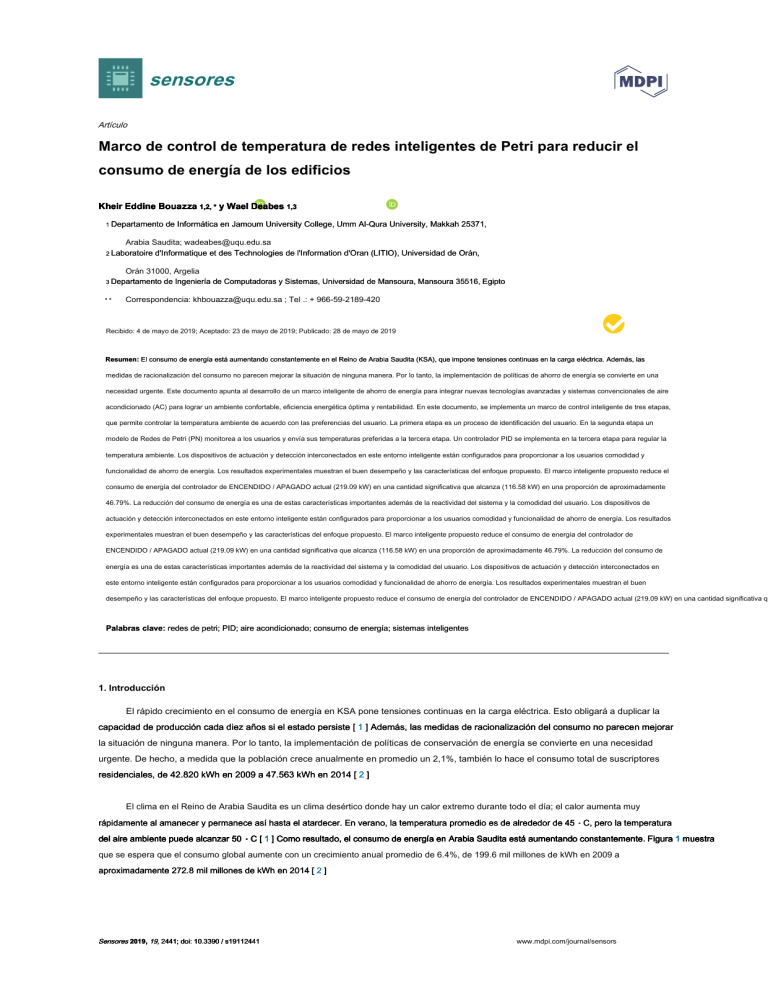
sensores Artículo Marco de control de temperatura de redes inteligentes de Petri para reducir el consumo de energía de los edificios Kheir Eddine Bouazza 1,2, * y Wael Deabes 1,3 1 Departamento de Informática en Jamoum University College, Umm Al-Qura University, Makkah 25371, Arabia Saudita; wadeabes@uqu.edu.sa 2 Laboratoire d'Informatique et des Technologies de l'Information d'Oran (LITIO), Universidad de Orán, Orán 31000, Argelia de Ingeniería de Computadoras y Sistemas, Universidad de Mansoura, Mansoura 35516, Egipto 3 Departamento ** Correspondencia: khbouazza@uqu.edu.sa ; Tel .: + 966-59-2189-420 Recibido: 4 de mayo de 2019; Aceptado: 23 de mayo de 2019; Publicado: 28 de mayo de 2019 Resumen: El consumo de energía está aumentando constantemente en el Reino de Arabia Saudita (KSA), que impone tensiones continuas en la carga eléctrica. Además, las medidas de racionalización del consumo no parecen mejorar la situación de ninguna manera. Por lo tanto, la implementación de políticas de ahorro de energía se convierte en una necesidad urgente. Este documento apunta al desarrollo de un marco inteligente de ahorro de energía para integrar nuevas tecnologías avanzadas y sistemas convencionales de aire acondicionado (AC) para lograr un ambiente confortable, eficiencia energética óptima y rentabilidad. En este documento, se implementa un marco de control inteligente de tres etapas, que permite controlar la temperatura ambiente de acuerdo con las preferencias del usuario. La primera etapa es un proceso de identificación del usuario. En la segunda etapa un modelo de Redes de Petri (PN) monitorea a los usuarios y envía sus temperaturas preferidas a la tercera etapa. Un controlador PID se implementa en la tercera etapa para regular la temperatura ambiente. Los dispositivos de actuación y detección interconectados en este entorno inteligente están configurados para proporcionar a los usuarios comodidad y funcionalidad de ahorro de energía. Los resultados experimentales muestran el buen desempeño y las características del enfoque propuesto. El marco inteligente propuesto reduce el consumo de energía del controlador de ENCENDIDO / APAGADO actual (219.09 kW) en una cantidad significativa que alcanza (116.58 kW) en una proporción de aproximadamente 46.79%. La reducción del consumo de energía es una de estas características importantes además de la reactividad del sistema y la comodidad del usuario. Los dispositivos de actuación y detección interconectados en este entorno inteligente están configurados para proporcionar a los usuarios comodidad y funcionalidad de ahorro de energía. Los resultados experimentales muestran el buen desempeño y las características del enfoque propuesto. El marco inteligente propuesto reduce el consumo de energía del controlador de ENCENDIDO / APAGADO actual (219.09 kW) en una cantidad significativa que alcanza (116.58 kW) en una proporción de aproximadamente 46.79%. La reducción del consumo de energía es una de estas características importantes además de la reactividad del sistema y la comodidad del usuario. Los dispositivos de actuación y detección interconectados en este entorno inteligente están configurados para proporcionar a los usuarios comodidad y funcionalidad de ahorro de energía. Los resultados experimentales muestran el buen desempeño y las características del enfoque propuesto. El marco inteligente propuesto reduce el consumo de energía del controlador de ENCENDIDO / APAGADO actual (219.09 kW) en una cantidad significativa q Palabras clave: redes de petri; PID; aire acondicionado; consumo de energía; sistemas inteligentes 1. Introducción El rápido crecimiento en el consumo de energía en KSA pone tensiones continuas en la carga eléctrica. Esto obligará a duplicar la capacidad de producción cada diez años si el estado persiste [ 1 ] Además, las medidas de racionalización del consumo no parecen mejorar la situación de ninguna manera. Por lo tanto, la implementación de políticas de conservación de energía se convierte en una necesidad urgente. De hecho, a medida que la población crece anualmente en promedio un 2,1%, también lo hace el consumo total de suscriptores residenciales, de 42.820 kWh en 2009 a 47.563 kWh en 2014 [ 2 ] El clima en el Reino de Arabia Saudita es un clima desértico donde hay un calor extremo durante todo el día; el calor aumenta muy rápidamente al amanecer y permanece así hasta el atardecer. En verano, la temperatura promedio es de alrededor de 45 ◦ C, pero la temperatura del aire ambiente puede alcanzar 50 ◦ C [ 1 ] Como resultado, el consumo de energía en Arabia Saudita está aumentando constantemente. Figura 1 muestra que se espera que el consumo global aumente con un crecimiento anual promedio de 6.4%, de 199.6 mil millones de kWh en 2009 a aproximadamente 272.8 mil millones de kWh en 2014 [ 2 ] Sensores 2019, 19, 2441; doi: 10.3390 / s19112441 www.mdpi.com/journal/sensors 2012 245,6 2013 259,9 2014 272,8 2 de 19 Sensores 2019, 19, 2441 214 229,7 259,9 272,8 Billion (kWh) 199,6 245,6 50100150200250300 0 2009 2010 2011 2012 2013 2014 Figura 1. Consumo de electricidad de KSA [ 2 ] La región occidental del reino tiene el mayor nivel de consumo de electricidad con aproximadamente el 38% del consumo total [ 2 ] La electricidad es una fuente de energía para el 99% de los usuarios finales, de los cuales el 80% consume menos de 4000 kWh por mes y el 1,4% consume más de 10,000 kWh por mes. El sector residencial consume la mayor parte de la energía pública. De hecho, es bien sabido que la mayor parte del consumo de energía en los hogares se debe al uso de calefacción / refrigeración de espacios y agua, al uso de electrodomésticos e iluminación [ 3 ] La ciudad de Makkah, la ciudad más grande de la región occidental, había visto aumentar su consumo de electricidad a una tasa del 12%. Además, el sector residencial consume más del 50% de la producción total de electricidad en el Reino. En verano, los sistemas de aire acondicionado son responsables de consumir del 60 al 70 por ciento de la energía total consumida por los edificios residenciales [ 1 ] Como resultado, el sector eléctrico del Reino debe responder de manera efectiva a la creciente demanda de electricidad. Un entorno inteligente se considera un agente inteligente que reconoce el comportamiento de los ocupantes y el estado del entorno físico mediante sensores [ 4 4 ] Después de eso, el entorno se adapta utilizando controladores para optimizar un rendimiento medido específico. Recientemente, los investigadores pudieron diseñar camas de prueba de entorno inteligente que rastrean la ubicación y las actividades de los ocupantes y responden a situaciones peligrosas. Se implementan diversos tipos de sensores en estos bancos de pruebas para clasificar diferentes tipos de actividades [ 5 5 ] Por lo general, los sensores conectados al cuerpo del ocupante se utilizan para reconocer las actividades corporales repetitivas, como caminar y correr. Sin embargo, los datos recopilados de los sensores conectados a los objetos (puertas, ventanas, electrodomésticos y contenedores de medicamentos) que rodean al ocupante se aplican para diferenciar otras actividades. Hoy, el rápido crecimiento de los procesadores y las tecnologías de comunicación de red ha tenido un impacto significativo en la configuración de entornos inteligentes [ 6 6 ] Por lo tanto, los tres factores principales que han afectado el desarrollo reciente de entornos inteligentes son, en primer lugar, la disponibilidad de dispositivos de red pequeños, económicos y fáciles de instalar. En segundo lugar, la accesibilidad al hogar de varias tecnologías de red (Wi-Fi, Bluetooth y Ethernet en línea) y, en tercer lugar, la difusión de pequeños dispositivos informáticos como teléfonos inteligentes, tabletas y netbooks. En [se presentó un controlador inteligente basado en una red neuronal aleatoria (RNN) en una plataforma de Internet de las cosas (IoT) integrada con procesamiento en la nube para la formación de RNN [ 7 7 ] Esta plataforma IoT se integró con el procesamiento en la nube para la capacitación RNN. La plataforma propuesta consume un 27.12% menos de energía que los controladores simples basados en reglas. En [ 8 ], los autores trataron de dar un nuevo modelo del hogar inteligente, para obtener una mayor flexibilidad para el usuario, lo que da como resultado un control más preciso de los dispositivos móviles y las temperaturas de carga termostática. Se presentó un controlador de administración de energía para optimizar el consumo de energía y la administración del lado de la demanda en [ 9 9 ] La reducción del consumo de energía y el costo de la iluminación en los sistemas HVAC se han logrado utilizando una lógica difusa. Autores en [ 10 ] han sintetizado los temas emergentes relevantes de las tecnologías de hogares inteligentes en áreas cruciales de la vida de los usuarios. De manera crítica y razonablemente integral, se realizó la revisión de las funciones, servicios, hogar inteligente, así como la presentación de los beneficios y la implementación. Sensores 2019, 19, 2441 3 de 19 Redes de Petri (PN) son una herramienta prometedora ampliamente utilizado en la supervisión y control de los sistemas de control de eventos discretos debido a su gran capacidad de representar y procesos concurrentes y paralelas modelo. Los autores de [ 11 ] Presentó un estudio de las técnicas utilizadas en el enfoque evento forzando basado en diagrama de escalera, PN, y de color PN (CPN). en [ 12 ] Un tiempo real de PN se utiliza para proporcionar una interfaz de planta directa. Un controladores basados CPN ordenados también se utilizaron para proporcionar una interfaz de planta directa en [ 13 ]. El modelado y análisis de sistemas de fabricación son una de las zonas que han hecho un amplio uso de PN [ 14 ]. De hecho, PN se han utilizado para modelar sistemas de producción con tampones, cadenas de montaje automatizadas y para análisis de rendimiento de sistemas de la competencia [ 15 ] El formalismo ha sufrido varias extensiones para cumplir dos objetivos. Primero, modelar, controlar y supervisar sistemas complejos describe muchas áreas de aplicación. En segundo lugar, lidiar con la aparición de nuevos sistemas como los sistemas en tiempo real. Entre estas extensiones se encuentran el PN estocástico (SPN) [ dieciséis ]; el CPN [ 17 ]; la PN temporal (TPN) [ 18 años ], etc. En cuanto a las casas inteligentes, las PN no se han utilizado ampliamente como las áreas de investigación mencionadas anteriormente. Sin embargo, en [ 19 ], Se consideraron modelos PN para los aparatos eléctricos más utilizados. De hecho, el autor fue capaz de demostrar los principios de funcionamiento y las interacciones entre el refrigerador, la lavadora, y el sistema de casa inteligente. Usando el modelo de PN, un tiempo real de los sistemas de gestión de energía (EMS) que reduce el costo de la energía eléctrica, a través de la priorización de los recursos y la interferencia simultánea con electrodomésticos inteligentes, se presenta en [ 20 ]. La integración de las cualidades y características de los aparatos electrodomésticos inteligentes y la PN, se propone un sistema de gestión de energía en el hogar basada en dispositivos de [ 21 ]. Con el fin de modelar y analizar sistemas de control de eventos discretos en los hogares inteligentes, los autores utilizaron PN en [ 22 ]. en [ 23 ], Se utilizó una PN sincronizada para modelar un escenario de conferencia inteligente. en [ 24 ], Utilizando el PN híbrido de color, los diferentes cambios de procesamiento y estado de señal en un HVAC inversor híbrido (Calefacción, Ventilación y Aire Acondicionado) systemwere modelados. Los modos discretos y continuos del modelo han sido ejecutados juntos. en [ 25 ], Utilizando el PN, los autores modelados sistemas de control de climatización, con el fin de analizar las prestaciones del sistema de control y por lo tanto fueron capaces de encontrar la temperatura óptima para el consumo mínimo de energía. Es bien sabido que la inadecuada lazo de control puede conducir a la pérdida de energía y reducir la calidad de la comodidad del usuario [ 26 ]. El modelo de control predictivo (MPC) es uno de los métodos más utilizados para el control de sistemas de HVAC. Se trabaja en el ajuste de la respuesta del controlador según la predicción del comportamiento futuro del edificio [ 27 - 29 ]. Sin embargo, a pesar del buen desempeño de la MPC, adolece de algunas desventajas. Uno de los más importantes es la sensibilidad de este método de control para el modelado de incertidumbres que no puede ser ignorado [ 30 ]. La importancia de la precisión modelo viene del hecho de que una falta de coincidencia en el modelo implicará una predicción inexacta y por lo tanto el deterioro del rendimiento de la MPC. Otro problema importante de este método de control es un gran número de cálculos necesarios para su aplicación, que requiere un cambio a soluciones locales tales como MPC distribuido [ 30 ]. De hecho, cuando la complejidad del modelo de construcción a ser importante, la falta de recursos informáticos en la construcción de plataformas de control hace que sea imposible calcular el MPC centralizada. Una forma de superar este problema es utilizar solucionadores numéricos asociados con el hardware específico fi, que aumenta el costo de esta solución. Otra manera de resolver este segundo problema es utilizar soluciones locales tales como MPC distribuida. Sin embargo, estas soluciones locales pueden ser menos precisos que el método global [ 31 , 32 ]. En este trabajo, para reducir el consumo de energía, se desarrolla un marco para el control de temperatura inteligente. Este marco se basa en la utilización de tres etapas diferentes. La primera etapa se utiliza para reconocer al usuario y luego generar su temperatura preferida. En la segunda etapa, un PN utiliza la información obtenida de la primera etapa genera la temperatura deseada pro fi les de los usuarios y lo envía como una señal de referencia a la siguiente etapa. La tercera etapa es una etapa de regulación usando un controlador PID trabaja en la coincidencia de la temperatura real de la habitación, y la temperatura preferida del usuario generado. Después de recordar algunos de controlador y de reconocimiento facial propiedades PN, PID en las Secciones 2 - 4 , el tres etapas del marco se presentan en teoría y en la práctica y se explican en cada separada 4 de 19 sensores 2019, 19, 2441 secciones. Los resultados numéricos explicados en la Sección 7 will show the good performances achieved by applying the proposed framework. The final section will conclude this work and provide some directions for future works. P1 t1 2. Petri Nets A PN is a directional bipartite graph consisting of a finite set of places, P = P 1, P 2, P 3, . . . , P m, P2 represented by circles, a finite set of transitions, T = t 1, t 2, t 3, . . . , t n, represented by bars, ( P ∩ T = ∅ and P ∪ T = ∅), and a finite set of oriented arcs that links a place to a transition or a transition to a place. These arcs represent the M 1=[ 3 1 1] conditions required for an action to be feasible and the consequences of this action, as shown in Figure 2 . t1 P1 P2 P1 t1 Figure 2. Petri Net. P2 N:PT −→ χ is the input matrix that specifies the arcs directed from places to transitions, O : PT −→ χ is the output matrix that specifies the arcs directed from transitions to places. Here, χ is the set of non-negative integer numbers. A condition is the description of the state of a modeled system resource. In the PN formalism, the condition is modeled with the help of a place. An event is an action that takes place within the system and whose realization depends on the state of the system. In the PN formalism, the event is modeled using a transition. The marking of a PN is specified by the presence within the places of a finite number (positive or zero), marks, or tokens. A place is empty or marked. During Pthe system evolution, the marking is likely to be modified. The 1 P 1 initial marking, M 0, P1 P1 t1 t1 t1 P3 P3 Firing t 1 of a PN corresponds to the initial distribution of the tokens in each of t1 the Firing PN places, t1 P3 P3 which specifies the initial state of the system. The evolution of the PNPstate corresponds to the evolution of the marking. Tokens,Pwhich materialize the state of the network at a given moment, 2 2 P2 P2 can pass from one place to another by crossing or firing a transition, as shown in Figure 3 . A transition is validated (or fired) if all its entry M 1=[ 3 1 1]M 1=[ 3 1 1] M 2=[ 2 0 2]M 2=[ 2 0 2] places contain at least one token. Passing or firing a transition involves removing one token from each of the transition’s input places and adding one in each of the same transition’s output places, as shown in Figure 4 . P1 P1 P1 t1 P2 t1 P3 P1 t1 P3 P2 P2 t1 P3 P3 P2 ( a) Not validated ( b) Validated Figure 3. Transitions Validation. P1 P1 t1 P3 t1 Firing t 1 P2 P2 M 1=[ 3 1 1] M 2=[ 2 0 2] Figure 4. Firing a Transition. P1 P1 t1 t1 P3 Sensors 2019, 19, 2441 5 of 19 3. Pid Controller When process control appeared around the 1940s, the PID controller immediately became one of the most used controllers. Indeed, currently, in all applications requiring control, more than 95% of the used controllers are of PID type [ 33 ]. PID controllers have been able to adapt to many technological changes over time. They have been applied to many fields such as power generation, mechanics, transportation, pneumatics, crushing processes, microprocessors, electronic tubes, integrated circuits as well as in other application areas (for more details see [ 34 – 36 ]). Almost all PID controllers manufactured currently are fact-based microprocessors which have opened up new opportunities and allowed the use of additional features such as continuous adaptation planning gain and automatic tuning [ 37 – 40 ]. There have been some publications on expanding the idea of crushing process control from the crusher itself, such as in [ 34 , 41 ]. The PID is described by the following equation [ 42 ]: ∫t u(t) = k p e(t) + k i 0 e( τ) d τ + k d de(t) d t (1) where t is the time or instantaneous time (the present), τ is the variable of integration (takes on values from time 0 to the present t). u(t) is the control signal, e(t) is the control error ( e(t) = r(t) − y(t)) when r(t) is the reference variable, and y(t) is the systemmeasurement variable, and k p, k i, and k d are all non-negative and they denote the coefficients for the proportional, integral, and derivative terms respectively (sometimes denoted P, I, and D). The system control signal is the sum of these three terms: the P-term (which is proportional to the error), the I-term (which is proportional to the integral of the error), and the D-term (which is proportional to the derivative of the error). The integral, proportional, and derivative part can be interpreted as control actions based on the past, the present and the future, respectively. Each term has a particular task: • The P term ( k p e(t)) is proportional to the current value of the error e(t). For example, if the error is large and positive, the control output will be proportionately large and positive, taking into account the gain factor “ k p ”. Using proportional control alone will result in an error between r(t) signal and y(t) because it requires an error to generate the proportional response. If there is no error, there is no corrective response. • The I term ( k i ∫t 0 e( τ) d τ) accounts for past values of the error and integrates them over time. For example, if there is a residual error after the application of proportional control, the integral term seeks to eliminate the residual error by adding a control effect due to the cumulative historical value of the error. When the error is eliminated, the integral term will cease to grow. This will result in the proportional effect diminishing as the error decreases, but this is compensated for by the growing integral effect. • The D term ( k d de(t) d t ) predicts system behavior and thus improves settling time and stability of the system. It is also the best estimate of the future trend of the error, based on its current rate of change. It is sometimes called “anticipatory control”, as it is effectively seeking to reduce the effect of the error by exerting a control influence generated by the rate of error change. The more rapid the change, the greater the controlling or dampening effect. 4. User Identification The automatic management of user access to restricted systems can be divided into two broad categories: authentication and recognition/identification. In authentication systems, the systemmust give a binary decision whether or not the subject belongs to a group of authenticated users. It is not necessary to identify exactly who the subject is. On the other hand, identification systems impose the exact determination of the subject identity. User identification and inherently authentication can be done in mainly three ways: knowledge-based, token, and biometric [ 43 ]. Knowledge-based identification means the exploitation Sensors 2019, 19, 2441 6 of 19 of “something that only the user knows”, such as a password or a personal identification number. The idea of token identification is based on the use of a small electronic device that identifies the person who wears it. Biometric data can be targeted specifically towards authentication, e.g., [ 44 ]; or identification, e.g., [ 45 ]. The advantage of this type of data is that it can not be intercepted or lost. The idea is actually to exploit data about “something that is only this user”, such as his voice, fingerprints or his images, especially those of the face. In the latter case, the required operations are acquisition, processing, and interpretation of these images. For the proposed framework, the method used in stage 1, an identification method based on facial recognition is the best, as it does not require any special cooperation from the user. Indeed, facial recognition has been a very active area of research in the last four decades since the first system developed by Kanade [ 46 ]. These years of research have made it possible to reach an excellent level of maturity and a lot of success in several real-time practical applications [ 47 , 48 ]. 5. Smart Temperature Control Framework In this section, the theoretical aspects of the framework are explained. More practical details will be given in the case study. The proposed framework consists of three stages, as shown in Figure 5 , each dedicated to a specific mission. The role of the first step is to recognize the user. Indeed, during this stage, an identification process allows to identify the detected person, and then to transmit the identification results to the next stage. User Identification Preferred Temperature Generation AI Petri Nets Temperature Regulation PID Controller Figure 5. Temperature control framework. In the second stage, based on user identification results obtained from the previous stage, the user preferred temperature is generated and sent to the next step. So, the main role of this stage is to monitor the room, to obtain the identification results, and based on these results, to send the identified user preferred temperature to the next step. Face Detection Features Face We chose, in this stage, to use the PN, for its qualities mentioned in Section 2 , such as power of Viola-Jones algorithm Extraction Identification modeling and implementation, the possibility of real-time implementation and supervision qualities. Thus, thanks to the use of PN, we can while supervising and monitoring the room, send the preferred temperatures. The third stage is the temperature regulation stage. In this paper, because of its simplicity and speed of convergence, as explained in Section 3 , a traditional PID has been chosen. The latter will receive the user’s preferred temperature as a reference signal and send the control signals needed to regulate the temperature in the room. Thus, we obtain a smart system, able, autonomously, tomonitor the room, to detect a newpresence, to identify the exposed person, to generate his preferred temperature, to send this temperature as a reference signal for temperature regulation and finally to make sure that the ambient temperature in the room reaches this reference temperature. Thus, we obtain a smart framework with various components as a single intelligent entity. This framework is autonomously able to: • monitor the presence at the office, • detect a new presence, • identify the detected person, • generate his preferred temperature, Sensors 2019, 19, 2441 7 of 19 • send this temperature as a reference signal for temperature regulation, • guarantee that the ambient temperature in the room reaches this reference temperature, • finally, goes into standby state or in the off state in the absence of anyone. The innovation of this work is to have associated different separated processes; person identification, monitoring and supervising of the office through PN, and temperature regulation using PID controller to obtain a smart framework that reduces the energy consumption. All tools used in this framework are well-known and have given good results each in its field. We chose each of these components for its main advantages. Therefore, the proposed framework integrates all the benefits of these components: feasibility, ease of implementation, and high flexibility. 6. Case Study As a case study, we consider our office located on the second floor of Al-Jamoum University college building with an area of 9 m 2. The office, shown in Figure 6 , is assigned to two lecturers Lec 1 and Lec 2. The office includes two desks, a window, a door, an Air Conditioner (AC), a PID controller connected to the AC, and sensors to measure the necessary data. 3m Wall Outer Thickness Air Conditioner (AC) Conditioner HeatAir removed by ACremoved -q` Air(AC) Conditioner Heat by AC -q` (AC) h out h in T amb Outdoor Temperature X Heat Desk of Desk of Lecturer 2 Lecturer 1 3m Sun Disturbance T Transfer Indoor Temperature Thermal Conductivity K Figure 6. Office Layout. 6.1. Stage 1: User Identification The main idea of face recognition is to compare a face captured image with a collection of previously stored faces (a faces database) to identify the person in the input image (Al-Allaf, 2014). A standard PC camera, placed in front of each lecturer, is used to implement the automatic face identification system in real time. The resources needed to develop these applications can be retrieved from available open sources. The implementation is done according to the three steps shown in Figure 7 : Step 1: Face detection (using Viola-Jones algorithm) Step 2: Feature extraction Step 3: Face identification Sensors 2019, 19, 2441 8 of 19 Face Detection Features Viola-Jones algorithm Extraction Face Identification Figure 7. Identification steps. 6.2. Stage 2: Desired Temperature Generation Using a Supervisor PN For simplicity, the supervisor PN shown in Figure 8 is divided into master and slave nets. The master net is represented by a red box, while the slave one is in a blue box. In Table 1 , places and transitions of the supervisor PN-based are given. 7:30AM No Occupancy OFF ON P4 Std By P5 P3 t6 t4 t2 t1 Sensor_1 MASTER NET P2 t3 Sensor_2 t5 P1 Occupancy T ≥ 7:00PM T > t7 Identification 8:00AM < T ≤ 7:00PM User t7 Lec.1 t8 P6 Identification Lec.1 t8 Lec.1&Lec.2 Lec.2 t10 t9 P7 P9 P8 Pref.1 t11 t12 1 t13 t12 1 D T=20s D T=20s D T=20s D T=20s t11 Pref.1 Pref.3 Pref.2 D T=20s SLAVE Net User SLAVE Net t9 P7 =1 =1 t15 =1= P10 t15 t14 =1= =1 Figure 8. PN based Supervisor. Sensors 2019, 19, 2441 9 of 19 Table 1. Developed PN places and transitions. Transitions Places P 1 An occupancy in the office t1 User detection P 2 No occupancy in the office t2 No user detection Stand-by mode t3 Working status changes from ON to Standby P 4 ONmode t4 Working status changes from Standby to ON P 5 OFF mode t5 Working status changes fromOFF to Standby P 6 User identif. process t6 Working status changes from Standby to OFF t7 Beginning of the identification t8 Lecturer 1 detected t9 Lecturer 2 detected t 10 Lecturer 1 and 2 detected simultaneously P3 P7 Sending user1 desired temp. to stage3 during t = 10 min P8 Sending user2 desired temp. to stage 3 t = 10 min P9 Sending users 1 and 2 desired temp. to stage 3 t = 10 min P 10 Intermediary state t 11, t 12 and t 13 = 1 t 14 and t 15 =1 6.2.1. Master PN The master net is designed to identify states of the system and to control the operating modes used for each different user’s presence situation. It is composed of five states. The Off state orders the extinction of the whole system at 7:00 p.m. while the system restarts at 07:30 a.m. From this time on, the system is either in ON state, enabled when the system detects an office occupancy, or in Standby state, activated when the system detects no occupancy. The advantage of using the standby state is that the desired reference temperature (sent to the PID in stage 3) remains relatively close to the user’s preferred temperature. Thus, the proposed system has significant energy savings, especially when the state of non-occupancy lasts too long, compared to the On/Off mode that maintains the same reference temperature even without occupancy. At the same time keeping the system in standby state allows obtaining a reactive system that can reach the user’s preferred temperature swiftly after detecting a new presence in the office. If the system shuts down and hence stops sending a reference temperature when there is no one in the office and if this non-occupancy state is extended, then the office’s temperature will increase severely under the effect of the outdoor temperature (very high in this geographical region). As a result, the quality of the user’s comfort will decrease, in case any lecture has to come back to the office again since the system will take a long time to regulate the temperature. Besides, after the detection of a new presence, the return to the user preferred temperature will require too much time. Consequently, the use of the standby state allows reaching the user’s preferred temperature quickly, which significantly improves the users’ comfort. A reference temperature equal to 30 ◦ C is sent during this state. The system is switched on at 7:30 a.m., and it goes directly into standby state which prepares the office for the arrival of the lecturers around 8:00 a.m. 6.2.2. Slave PN The slave networks only when the master net goes into the ON state and a fast user identification process starts. At the end of this process, the framework will finish identifying the lecturer’s presence in the office. There are three exclusive cases: Sensors 2019, 19, 2441 • 10 of 19 The first case is that the identified lecturer is Lec 1, then his preferred reference temperature T 1 will be sent to the third stage (PID controller). • The second case when Lec 2 is identified in the office. In this case, the preferred reference temperature sent to the third stage will be T 2. • In the last case the Lec 1 and Lec 2 will be present in the office simultaneously, then the reference temperature T 3, on which Lec 1 and Lec 2 have agreed, will be sent to the third stage. The sending state of the reference temperature to the third stage will remain activated for a duration chosen by the system manager (in our case a duration equal to 20 s). At the end of this period, two situations are possible. The first one is that a presence remains detected in the office, a new identification step is then performed, followed by sending the preferred reference temperature of the identified user and so on. The second possible situation is that no presence is detected in the office, then standby mode will be activated. 6.3. Stage 3: Temperature Regulation Based on a PID Controller The open loop transfer function of an air conditioner can be represented as [ 49 ]: TF 1 = 1 M.C.s +m ′ C p + KA (2) v X where M is the thermal mass (including the weight of the users and the thermal mass u ofcindoor air), r e + y u G C is the total specific heat capacity, A is the indoor surface area, X is the F outdoor wall thickness, K is the thermal conductivity coefficient, m ′ + + is the exchanging air flow and C P heat capacity at constant pressure p used to deduce the enthalpy of the gas (thermodynamics). To obtain the closed-loop model, a sensor in the evaporator of the indoor unit of a split type air conditioner is installed. The sensor WSN transfer function is as follow: TF 2 = 1 m sen C sen h conv A sen . (3) s+1 where m sen is the sensor mass, C sen is the sensor heat capacity, h conv is the convection coefficient and A sen is the sensor area. Therefore, the obtained closed loop system, necessary for the office temperature regulation, is shown in Figure 9 . Room Transfer Transfer Function Function Room T setting + - Controller T Compressor Output Sensor Transfer Function Feedback Figure 9. AC closed loop system. In addition, a heat loss could occur through walls and windows. Therefore, to get as close to reality as possible, three different types of disturbances are added to the previous model, as shown in Figure 10 . Indeed, the influence of the outside temperature D Out, the heat released by the human D Hum and the solar radiation passing through the window D Sun are the disturbances that have been added over the control signal. Typically, the outside temperature affects the office’s temperature as one of the most common disturbances in such type of systems. It is well known from the zero laws of thermodynamics that the heat goes fromwarm to cold. In Saudi Arabia, the average temperature per year is about 41.6 ◦ C Sensors 2019, 19, 2441 11 of 19 which is very high compared to the general temperature inside a typical office, therefore there will be a heat-transfer into the office during a long time of the year. Regarding the human disturbance inside the office, in order to maintain the human’s functionality, their bodies’ temperature has to be kept at a constant level. Therefore, thermal radiations from people affect the internal temperature of the office. Typically, a person releases about 70 W during sleeping and 100 W during doing light effort, which is considered in this work. Another type of disturbance that can affect temperature control is the solar radiation. There is a direct effect for the sun heat which increases the office temperature. This disturbance can be modeled from the solar constant on the planet’s surface which is around 684 W/m 2. Taking into consideration the effect of the clouds and windows reflection, about 40% of the total incoming energy during will enter the office. Sun Disturbance Outdoor temp Disturbance + + + Humans inside the room Disturbance Compressor Room Transfer Transfer Function Function Room Output T setting + - Controller + T + Sensor Transfer Function Feedback Figure 10. AC closed loop systemwith Disturbances. 7. Simulation Results In this section, simulations results are presented. These results demonstrate the effectiveness of the smart temperature control framework which reduces the energy consumption while respecting the user’s preferences. For these simulations, Matlab 2018a and PIPE: Platform Independent Petri Net (v4.3.0) is used to implement the system. The office presented in Figure 6 is supervised using the PN model developed in Figure 8 . The regulation model applied in stage 3 of the framework is represented by the model developed in [ 49 ] where a Hitachi RAS-22SCT/RAC-22SCT AC was used. This model is characterized by high quality, precision, and fits precisely with our needs. Indeed, the area of the room is similar to the one used in [ 49 ], with some changes in the weight and the number of people present in the office. For the biometric identification, an image of the present lecturer is captured by a webcam and the Viola-Jones algorithm is applied to detect the lecturer’s face. Afterward, the identification process is carried out to identify the corresponding lecturer and generate his preferred temperature. The scenario of lecturers presence implemented in the simulations is that of a typical working day. The scenario is described in Figure 11 . Whenever a lecturer is detected, his preferred temperature is sent as a reference signal to stage 3. Lec 1 has chosen 24 ◦ C as a preferred temperature while the lec 2 has chosen 26 ◦ C. When both lecturers are present in the office simultaneously, they have chosen 25 ◦ C as their preferred temperature. The AC always starts working in Stand By (Stdby) mode at 7:30 a.m. to reduce the office’s temperature to be suitable for the incoming lecturers. Usually, the working day ends at 4:00 p.m., however, the AC stays at the Stdby mode to keep a moderate temperature in case a lecturer returns to the office. It is crucial to notice that in this case, immediately after detecting the lecturer presence, the framework sends his preferred temperature to stage 3). At 7:00 p.m. the day is over and the AC goes into OFF mode. Sensors 2019, 19, 2441 12 of 19 38 Desired Temp Room Temp off 36 Off Temperature (°C) 34 32 Std. by 30 Std. by Std. by 28 Lec. 2 26 Lec. 1& Lec. 2 Lec.1 Lec.1 24 Lec.1 Lec. 1 &Lec.2 &Lec.2 22 7 9.5 12 Time (hrs) 14.5 17 19.5 Figure 11. Room temperature response with PID controller. Figure 12 shows the office’s temperature when the ON/OFF controller is applied. In Figure 11 the effect of the PID controller on the temperature according to the presence changes is shown. Room Temp Comprossor Output 36 34 30 100% 28 66.6% 26 33.3% 24 0% 0 0.25 0.5 0.75 Output Ratio (%) Temperature (° C) 32 1 Time (hrs) Figure 12. The room temperature response and compressor output with On-Off control. The temperature simulation using the smart framework with the external disturbances is shown in Figure 13 . 38 Desired Temp Room Temp 36 Temperature ( ° C) 34 32 30 28 26 24 22 7 9.5 12 Time (hrs) 14.5 Figure 13. Effect of disturbances on the room temperature regulation. 17 19.5 Sensors 2019, 19, 2441 13 of 19 Figure 13 shows the effect on the output temperature due to the disturbances explained in Section 6.3 . However, there is small overshoot in the temperature at transition points; the control signal can overcome that disturbance and enforce the output temperature to follow up the desired profile smoothly. Figure 14 illustrates the energy consumed after applying the PID controller within the smart framework, while Figure 15 illustrates the energy consumed when the On/Off control was applied . 10 4 Power Consumption ( w) 12 10 68 24 0 7 9.5 12 14.5 17 19.5 17 19.5 Time (hrs) Figure 14. The power consumption after applying PID controller. 10 4 ON Off Power Consumption (w) 25 15 2 0 510 0 7 9.5 12 14.5 Time (hrs) Figure 15. The power consumption of ON-OFF controller. The simulation results prove that the main two objectives of the proposed framework; the user’s comfort and energy consumption reduction are achieved. 1. The user’s comfort can be observed in Figure 11 through the short response time in the temperature signal. Indeed, it can be seen that, at each change of lecturer presence in the office, the framework generates the new user’s desired temperature, and the PID controller acts on the office ambient temperature to reach the desired one quickly. Choosing a room temperature equal to 30 ◦ C in the absence of both lecturers (Stdby mode), participates in reaching the preferred user’s temperature quickly, since it is well known that the outside temperature in KSA can easily exceed 50 ◦ C during summer. This reasonable ambient temperature consumes more energy, but it is necessary to maintain an acceptable user comfort level. 2. Energy saving: The comparison between the traditional system based on an On/Off signal shown in Figure 15 and the proposed smart framework illustrated in Figure 14 shows a considerable reduction in the energy consumed by the latter compared to the first one. In fact, the simulations Sensors 2019, 19, 2441 14 of 19 show that using the smart framework, the reduction in energy consumption is about 46.79% compared to the current On/Off controller. Indeed, using the On/Off controller, to keep the temperature around a predefined temperature of 25 ◦ C during 12 h, from 7:30 a.m. to 19:30 p.m., the total consumed energy was of 219.09 kW as shown in Figure 15 , while it is only of 116.58 kW using the smart framework, as shown in Figure 14 . Remark 1. To ensure an acceptable office ambient temperature throughout the day, we have chosen, in the absence of the two lecturers, a temperature equal to 30 ◦ C. This choice allows reaching the two lecturers preferred temperatures as quickly as possible. Choosing a lower ambient temperature forces the system to use much airflow at the output of the AC, which dramatically affects the lecturers’ comfort. However, keeping the ambient temperature at 30 ◦ C costs much more power consumption since the temperature in our region regularly exceeds 50 ◦ C. Indeed, as shown in Figure 16 , choosing an ambient temperature equal, for example, to 36 ◦ C allows, using the smart framework, to consume only 94.10 kW over the same duration, which represents a saving of 57.05% compared to the On/Off mode. Figure 16. Power consumption after applying the PID controller at Amb, Temp = 36 ◦ C. 8. Framework Advantages • Energy consumption reduction: Indeed, compared to the On/Off method used currently in the department building based on a predefined constant reference temperature throughout the day, the proposed framework allows sending each user preferred temperature. As a result, very significant energy savings are made, as shown in Figure 14 . Beyond these savings, the most important is the idea that at any time of the day, the proposed smart framework consumes the exact required energy, neither more nor less. • User’s comfort: The proposed approach responds precisely to the users’ needs. Indeed, the role of the second stage, the PN based supervisor, is to detect any presence in the office, identify the user, then send the corresponding reference temperature expressed by the identified user. This dramatically improves user comfort. • Reactivity: One of the critical features of the proposed approach is its reactivity. Indeed, this approach has a great ability to react, very quickly, to changes in its environment. This is because through the use of a PN and a closed control loop, can simultaneously perform several functions of observation, monitoring, and correction of the system. Any changes in the presence or absence of people in the controlled space are immediately reflected in the reference temperature sent to the third stage as well as in the control signal sent to the controlled system. • SystemSupervision: The fact that PN and closed-loop control are implemented in this framework gives the ability to supervise the global system in real time to ensure that the issued command is Sensors 2019, 19, 2441 15 of 19 in perfect harmony with the state of the system. This avoids the propagation of component failure to other components, which provides an entirely reliable control system. • Flexibility: The great interest of the proposed framework is its flexibility. Indeed, any necessary modification of conditions or variables used in the framework can be easily implemented in the PN and taken into account in office temperature regulation. Such modification could be for example the increasing or decreasing of the number of people using the office, or changing the preferred temperature of one or all users. In the case study discussed in this paper, if we decide to increase the number of people using the office to three, then we have to make the following changes. First, adding an additional state, with its input and output transitions, No Occupancy Second, changing the preferred temperature on which the three users have agreed. We get, as a result, the following PN shown in Figure 17 . P2 Sensor_1 P1 Occupancy 8:00AM < T ≤ 7:00PM t7 Identification P6 User Lec.1 t8 t11 D T=20s t13 t12 =1 =1 1 Pref.4 Pref.3 D T=20s D T=20s P10 P9 Pref.2 D T=20s &Lec.3 t11 t10 P8 Pref.1 Lec.1&Lec.2 Lec.3 Lec.2 t9 P7 SLAVE Net Sensor_2 t1 corresponding to the sending of the new user’s preferred temperature as a reference temperature (in a case he is alone in the office). t14 =1 P11 t16 t15 =1= =1 Figure 17. Modified PN to accommodate Lec 3. 9. Conclusions A smart framework that controls room temperature based on user preferences has been developed. The framework is composed of three stages. The first stage identifies the user and generates his preferred temperature. The second stage, based on the PN, is responsible for the supervision and monitoring of the controlled room and sends the users’ preferred temperatures as a reference signal to the next stage. The controller in the third stage regulates the temperature of the room. Simulation results prove the interest of the framework, its relevance, and convincing performances. Indeed, the results showed that the proposed smart framework, in addition to being fast, flexible and reactive, allowed to achieve significant energy savings. Another advantage of the proposed approach is that while achieving significant energy savings, it improves the users’ comfort by providing them with their exact preferred temperatures. In future work, we have two objectives. First, applying the proposed framework using the developed Petri Nets as well as more advanced regulation tools will undoubtedly improve performance. Typically, the improvement is due to the integration of more parameters from the controlled environment into the framework. Second, the proposed framework will be extended to control all the administrative offices of the Computer science department. Sensors 2019, 19, 2441 16 of 19 Author Contributions: conceptualization, K.E.B. and W.D.; methodology, K.E.B. and W.D.; software, K.E.B. and W.D.; validation, K.E.B. and W.D.; formal analysis, K.E.B. and W.D.; investigation, W.D.; resources, K.E.B. and W.D.; data curation, K.E.B. andW.D.; writing–original draft preparation, K.E.B.; writing–review and editing, K.E.B. and W.D.; visualization, W.D.; supervision, K.E.B.; project administration, K.E.B.; funding acquisition, K.E.B. Funding: This work was funded by the National Plan for Science, Technology and Innovation (MAARIFAH)—King Abdulaziz City for Science and Technology—the Kingdom of Saudi Arabia, award number (13-ENE2356-10). Acknowledgments: The authors would like to thank King Abdulaziz City for Science and Technology—the Kingdom of Saudi Arabia, for supporting the project number (13-ENE2356-10). The authors would like to thank Dasheng Lee for his help and assistance, especially for his answers to all our questions, which have greatly improved the manuscript. Conflicts of Interest: The authors declare no conflict of interest. Abbreviations The following abbreviations are used in this manuscript: AC Air Conditioner HVAC Heating, Ventilation and Air Conditioning RNN RandomNeural Network IoT Internet of Things PN Petri Nets CPN Colored Petri Nets SPN Stochastic Petri Nets TPN Temporal Petri Nets MPC Predictive Control Model Lec 1 Lecturer #1 Lec 2 Lecturer #2 HVAC Heating, Ventilation and Air Conditioning PID Proportional, Integral, and Differential Control Stdby Stand By mode The following symbols are used in this manuscript: P Set of places in Petri Net T ( in PN) Set of transitions in PN t is the time or instantaneous time (the present) (s) τ is the variable of integration (takes on values from time 0 to the present t) ( s) e(t) Control error r(t) Reference signal y(t) Systemmeasurement variable kp PID proportional constant ki PID integral constant kd PID derivative constant TF 1 Transfer #1 TF 2 Transfer #2 M Mass (kg) C Total specific heat capacity (J · kg − 1 · ◦ C − 1) Cp Heat capacity at constant pressure J/ ◦ C) T ( in TF) Temperature ( ◦ C) m′ Exchanging air flow (m 3/ s) A Indoor surface area (m 2) X Outdoor wall thickness (m) K Thermal conductivity coefficient (W · m − 1 · ◦ C − 1) m sen Sensor mass (kg) C sen Sensor heat capacity (J/ ◦ C) h conv Convection coefficient (W/(m 2 ◦ C)) A sen Sensor area (m 2) Sensors 2019, 19, 2441 17 of 19 References 1. 2. Alshahrani, J.; Boait, P. Reducing High Energy Demand Associated with Air-Conditioning Needs in Saudi Arabia. Energies 2019, 12, 87. [ CrossRef ] Saudi Arabia Ministry of Water and Electricity. 2013. Available online: https://www.mep.gov.sa/ en/AdditionalDocuments/PlansEN/9th/Ninth%20Development%20Plan%20-%20Chapter%2030%20%20Electricity.pdf (accessed on 27 May 2019) ). 3. U.S. Energy Information Administration—EIA—Independent Statistics and Analysis. 2013. Available online: https://www.eia.gov/consumption/residential/ (accessed on 3 February 2019). 4. Augusto, J.C.; Nakashima, H.; Aghajan, H. Ambient Intelligence and Smart Environments: A State of the Art. In Handbook of Ambient Intelligence and Smart Environments; Springer US: Boston, MA, USA, 2010; pp. 3–31, doi:10.1007/978-0-387-93808-0_1. [ CrossRef ] 5. Talari, S.; Shafie-Khah, M.; Siano, P.; Loia, V.; Tommasetti, A.; Catalão, J. A review of smart cities based on the internet of things concept. Energies 2017, 10, 421. [ CrossRef ] 6. Chan, M.; Estève, D.; Escriba, C.; Campo, C. A review of smart homes—Present state and future challenges. Comput. Methods Prog. Biomed. 2008, 91, 55–81. [ CrossRef ] 7. Javed, A.; Larijani, H.; Ahmadinia, A.; Emmanuel, R.; Mannion, M.; Gibson, D. Design and implementation of a cloud enabled random neural network-based decentralized smart controller with intelligent sensor nodes for HVAC. IEEE Internet Things J. 2017, 4, 393–403. [ CrossRef ] 8. Gonçalves, I.; Gomes, Á.; Antunes, C.H. Optimizing the management of smart home energy resources under different power cost scenarios. Appl. Energy 2019, 242, 351–363, doi:10.1016/j.apenergy.2019.03.108. [ CrossRef ] 9. Khalid, R.; Javaid, N.; Rahim, M.H.; Aslam, S.; Sher, A. Fuzzy energy management controller and scheduler for smart homes. Sustain. Comput. Inform. Syst. 2019, 21, 103–118, doi:10.1016/j.suscom.2018.11.010. [ CrossRef ] 10. Marikyan, D.; Papagiannidis, S.; Alamanos, E. A systematic review of the smart home literature: A user perspective. Technol. Forecast. Soc. Chang. 2019, 138, 139–154. [ CrossRef ] 11. Peng, S.S.; Zhou, M.C. Ladder Diagram and Petri-Net-Based Discrete-Event Control Design Methods. IEEE Trans. Syst. Man Cybern. Part C Appl. Rev. 2004, 34, 523–531. [ CrossRef ] 12. Bogdan, S.; Lewis, F.; Kovacic, Z.; Gurel, A.; Stajdohar, M. An Implementation of the Matrix-Based Spervisory Controller of Flexible Manufacturing Systems. IEEE Trans. Control Syst. Technol. 2002, 10, 709–716. [ CrossRef ] 13. Feldmann, K.; Colombo, A.; Schnur, C.; Stockel, T. Specification, design, and implementation of logic controllers based on colored Petri net models and the standard IEC 1131. II. Design and implementation. IEEE Trans. Control Syst. Technol. 1999, 7, 666–674, doi:10.1109/87.799667. [ CrossRef ] 14. Ramamoorthy, C.V.; Ho, G.S. Performance Evaluation of Asynchronous Concurrent Systems Using Petri Nets. IEEE Trans. Softw. Eng. 1980, SE-6, 440–449, doi:10.1109/TSE.1980.230492. [ CrossRef ] 15. Magott, J. Performance evaluation of concurrent systems using Petri nets. Inf. Process. Lett. 1984, 18, 7–13, doi:10.1016/0020-0190(84)90067-X. [ CrossRef ] 16. Molloy, M.K. Performance Analysis Using Stochastic Petri Nets. IEEE Trans. Comput. 1982, 31, 913–917, doi:10.1109/TC.1982.1676110. [ CrossRef ] 17. Jensen, K. Coloured petri nets and the invariant-method. Theor. Comput. Sci. 1981, 14, 317–336, doi:10.1016/0304-3975(81)90049-9. [ CrossRef ] 18. Ramchandani, C. Analysis of Asynchronous Concurrent Systems by Timed Petri Nets; Technical Report; Massachusetts Institute of Technology: Cambridge, MA, USA, 1974. 19. Ozkan, H.A. Petri net modelling of smart home appliances. In Proceedings of the 2017 International Conference on Smart Systems and Technologies (SST), Osijek, Croatia, 18–20 October 2017; pp. 23–29. 20. Ozkan, H.A. A new real time home power management system. Energy Build. 2015, 97, 56–64. [ CrossRef ] 21. Ozkan, H.A. Appliance based control for Home Power Management Systems. Energy 2016, 114, 693–707. [ CrossRef ] 22. Nabih, A.K.; Gomaa, M.M.; Osman, H.S.; Aly, G.M. Modeling, Simulation, and Control of Smart Homes Using Petri Nets. Int. J. Smart Home 2011, 5, 1–14. Sensors 2019, 19, 2441 18 of 19 23. Reignier, P.; Brdiczka, O.; Vaufreydaz, D.; Crowley, J.L.; Maisonnasse, J. Context-aware environments: From specification to implementation. Expert Syst. 2007, 24, 305–320, doi:10.1111/j.1468-0394.2007.00436.x. [ CrossRef ] 24. Abraham, J.; Neela, D. Modeling and performance analysis of hybrid inverter HVAC system using colored hybrid petri nets. Glob. J. Pure Appl. Math. 2016, 12, 2355–2366. 25. Almeida, A.G.S.; Villani, E.; Junqueira, F.; Miyagi, P. Hybrid approach to air conditioning systems modeling using Petri net. ABCM Symp. Ser. Mechatron. 2010, 4, 345–354. 26. Barwig, F.E.; House, J.M.; Klaassen, C.J.; Ardehali, M.M.; Smith, T.F. National Building Controls Information Program. In Proceedings of the 2002 ACEEE Summer Study on Energy-Efficiency in Buildings, Pacific Grove, CA, USA, 18–23 August 2002. In Proceedings of the 19th 27. Belic, F.; Hocenski, Z.; Sliskovic, D. HVAC control methods—A review. International Conference on System Theory, Control and Computing (ICSTCC), Cheile Gradistei, Romania, 14–16 October 2015. 28. Ma, Y.; Matuško, J.; Borrelli, F. Stochastic Model Predictive Control for Building HVAC Systems: Complexity and Conservatism. IEEE Trans. Control Syst. Technol. 2015, 23, 101–116. [ CrossRef ] 29. Qin, X.; Lysecky, S.; Jonathan, S. A Data-Driven Linear Approximation of HVAC Utilization for Predictive Control and Optimization. IEEE Trans. Control Syst. Technol. 2015, 23, 778–786. 30. Kwadzogah, R.; Zhou, M.; Li, S. Model predictive control for HVAC systems—A review. In Proceedings of the IEEE International Conference on Automation Science and Engineering (CASE), Madison, WI, USA, 17–20 August 2013; pp. 442–447. 31. Ma, Y.; Kelman, A.; Daly, A.; Borrelli, F. Predictive Control for Energy Efficient Buildings with Thermal Storage. IEEE Control Syst. 2012, 32, 44–64. 32. Liao, Z.; Dexter, A.L. An Inferential Model-Based Predictive Control Scheme for Optimizing the Operation of Boilers in Building Space-Heating Systems. IEEE Trans. Control Syst. Technol. 2010, 18, 1092–1102. [ CrossRef ] 33. Astrom, K.J.; Hagglund, T. New Tuning Methods For PID Controllers. In Proceedings of the 3rd ECC, Roma, Italy, 5–8 September 1995; pp. 2456–2462. 34. Itävuo, P.; Vilkko, M.; Jaatinen, A.; Viilo, K. Dynamic modeling and simulation of cone crushing circuits. Miner. Eng. 2013, 43–44, 29–35, doi:10.1016/j.mineng.2012.07.019. [ CrossRef ] 35. Larsson, P.; Hagglund, T. Control Signal Constraints and Filter Order Selection for PI and PID Controllers. In Proceedings of the American Control Conference 2011, San Francisco, CA, USA, 29 June–1 July 2011. 36. Vladova, Y.R.; Yu, V. Control Signals of a Predictive Industrial PID Controller Article. Russi Eng. Res. 2018, 38, 399–402. [ CrossRef ] 37. Woo, Z.W.; Chung, H.Y.; Lin, J.J. A PID Type Fuzzy Controller With Self-Tuning Scaling Factors. Fuzzy Sets Syst. 2000, 115, 321–326. [ CrossRef ] 38. Aggarwal, V.; Mao, M.; O’Reilly, U.M. A Self-Tuning Analog Proportional-Integral-Derivative (PID) Controller. In Proceedings of the IEEE Conference on Adaptive Hardware and Systems, Istanbul, Turkey, 15–18 June 2006. 39. Kokate, R.D.; Waghmare, L.M.; Deshmukh, S.D. Review of Tuning Methods of DMC and Performance Evaluation with PIDAlgorithms on a FOPDTModel. In Proceedings of the IEEE International Conference on Advances in Recent Technologies in Communication and Computing, Kottayam, India, 16–17 October 2010. 40. Irshad, M.; Ali, A. A Review on PID tuning rules for SOPTD inverse response processes. In Proceedings of the International Conference on Intelligent Computing, Instrumentation and Control Technologies (ICICICT), Kannur, India, 6–7 July 2017. 41. Sbarbaro, D. Control of crushing circuits with variable speed drives. IFAC Proc. Vol. 2005, 38, 80–84. [ CrossRef ] 42. Astrom, K.; Hägglund, T. PID Controllers: Theory, Design, and Tuning, 2nd ed.; Instrument society of America: Triangle Park, NC, USA, 1995. 43. Jain, A.; Hong, L.; Pankanti, S. Biometric identification. Commun. ACM 2000, 43, 90–98. [ CrossRef ] 44. Abdel-Hakim, A.E.; El-Saban, M. Face authentication using graph-based low-rank representation of facial local structures for mobile vision applications. In Proceedings of the 2011 IEEE International Conference on Computer Vision Workshops (ICCVWorkshops), Barcelona, Spain, 6–13 November 2011; pp. 40–47. 45. Brunelli, R.; Falavigna, D. Person identification using multiple cues. IEEE Trans. Pattern Anal. Mach. Intell. 1995, 17, 955–966. [ CrossRef ] Sensors 2019, 19, 2441 19 of 19 46. Kanade, T. Picture Processing System by Computer Complex and Recognition of Human Faces. Ph.D. Thesis, Kyoto University, Kyoto, Japan, 1973. 47. Arandjelovic, O. Gradient edge map features for frontal face recognition under extreme illumination changes. In Proceedings of the BMVC 2012: Proceedings of the British Machine Vision Association Conference, Surrey, UK, 3–7 September 2012. 48. Arandjelovic, O. Making the most of the self-quotient image in face recognition. In Proceedings of the 10th IEEE International Conference and Workshops on Automatic Face and Gesture Recognition, Shanghai, China, 22–26 April 2013. 49. Cheng, C.C.; Lee, D. Smart Sensors Enable Smart Air Conditioning Control. Sensors 2014, 14, 11179–11203. [ CrossRef ] ©c 2019 by the authors. Licensee MDPI, Basel, Switzerland. This article is an open access article distributed under the terms and conditions of the Creative Commons Attribution (CC BY) license (http://creativecommons.org/licenses/by/4.0/).
